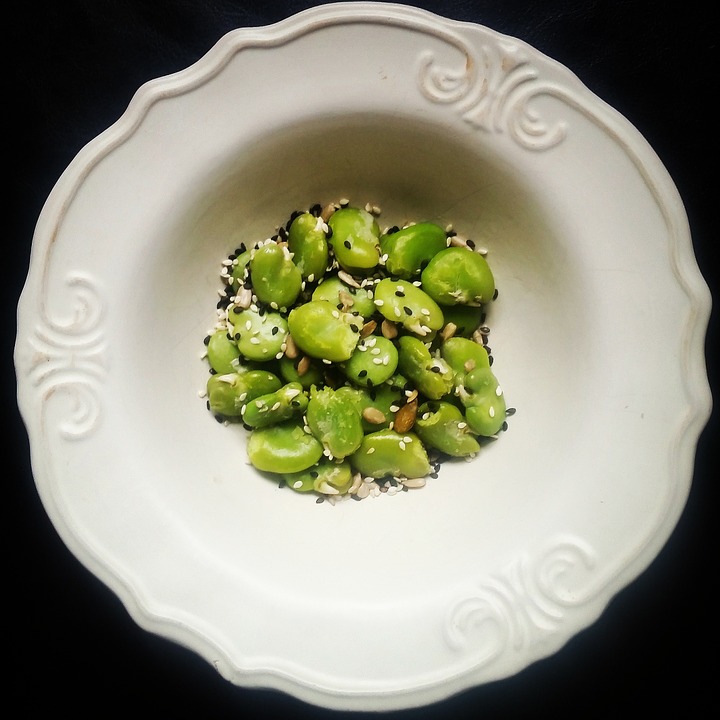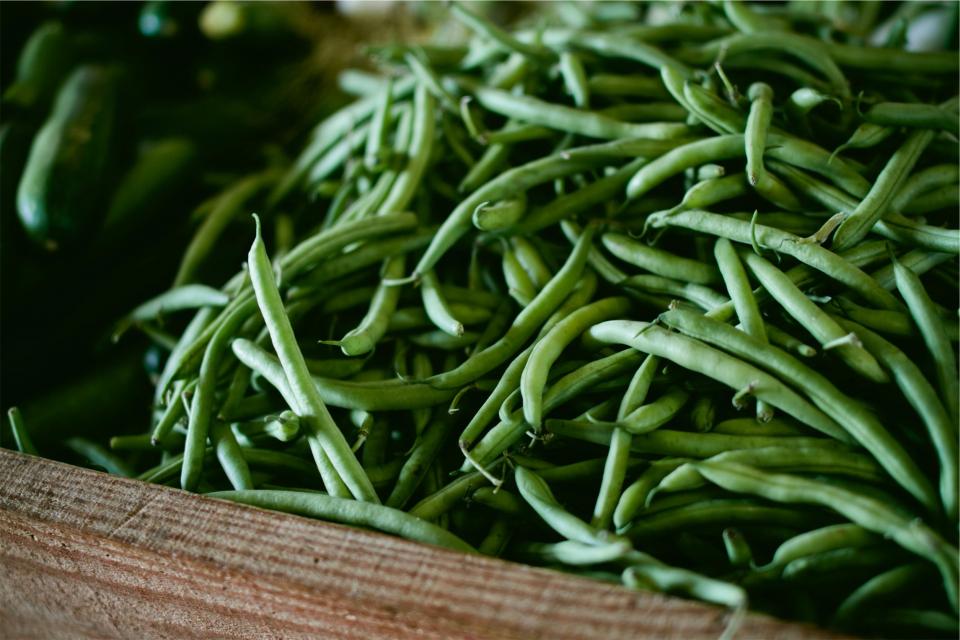This article explores the safety and benefits of green beans for cats, providing a comprehensive guide for pet owners. We'll discuss their nutritional profile, potential advantages, potential risks, and answer frequently asked questions.
Part 1: Nutritional Value of Green Beans

1.1. Macronutrients
Green beans offer a modest amount of protein, contributing to muscle building and tissue repair. Their primary nutritional value lies in their high dietary fibre content. Fibre is crucial for healthy digestion, facilitating regular bowel movements and promoting a balanced gut microbiome.
1.2. Vitamins and Minerals
Green beans are packed with essential vitamins. They're a good source of vitamin A, vital for vision and immune function; vitamin C, an antioxidant that supports immune health and collagen production; and vitamin K, essential for blood clotting and bone health.
They also provide various minerals like iron, crucial for oxygen transport in the blood; potassium, vital for muscle function and fluid balance; and magnesium, which plays a role in energy production and muscle relaxation.
Part 2: Benefits of Feeding Green Beans to Cats

2.1. Weight Management
Green beans are a low-calorie, high-fibre option, making them a suitable snack for overweight or obese cats. The fibre content helps promote feelings of fullness, reducing the urge to overeat and aiding in weight management.
2.2. Digestive Health
The abundance of fibre in green beans benefits digestion. It acts as a natural laxative, promoting regular bowel movements and preventing constipation. Additionally, fibre helps maintain a healthy gut microbiome, contributing to overall digestive well-being.
2.3. Kidney Health
Green beans are low in phosphorus, a mineral that can be challenging for cats with kidney disease to process. A low-phosphorus diet can help reduce strain on the kidneys and improve overall kidney health.
2.4. Potential for Lowering Blood Sugar Levels
While not a definitive cure for diabetes, some research suggests that green beans' low glycemic index (GI) might help regulate blood sugar levels in cats. It's essential to consult with a veterinarian for specific dietary recommendations regarding diabetes management.
Part 3: Potential Risks of Feeding Green Beans to Cats
3.1. Toxicity
While generally safe, raw green beans contain lectin, a substance that can cause digestive upset in cats. Cooking green beans thoroughly destroys lectin, making them safe for consumption.
3.2. Choking Hazard
Small, whole green beans can pose a choking hazard, especially for kittens. It's crucial to cut them into small pieces before feeding to avoid potential choking incidents.
3.3. Allergies
Though rare, some cats might be allergic to green beans. Symptoms of an allergic reaction can include vomiting, diarrhoea, and skin irritation. It's important to monitor your cat for any adverse reactions after introducing green beans to their diet.
Part 4: How to Feed Green Beans to Cats
4.1. Preparation
Green beans should be thoroughly cooked before being fed to cats. Boiling, steaming, or roasting are suitable cooking methods. Avoid adding salt, butter, or other seasonings that can be harmful to cats.
4.2. Serving Size
Start with small portions, such as a few pieces per day, and monitor your cat's reaction. Adjust the amount based on their individual needs and response.
4.3. Frequency
Green beans should be offered as an occasional treat or supplement to a balanced commercial diet. They should not be a primary food source.
Part 5: Green Beans and Other Cat Foods
5.1. Commercial Cat Food
Some commercial cat foods include green beans as an ingredient, offering a balanced diet formulated to meet a cat's nutritional needs. These products provide complete and balanced nutrition and can be a convenient option.
5.2. Homemade Cat Food
Green beans can be incorporated into homemade cat food recipes. Consult with a veterinarian or animal nutritionist to ensure the recipe is balanced and meets your cat's specific dietary needs.
Part 6: Green Beans and Specific Cat Conditions
6.1. Diabetes
Green beans can be a suitable treat for diabetic cats due to their low carbohydrate content. Consult with a veterinarian for specific dietary recommendations regarding managing diabetes in cats.
6.2. Obesity
Green beans can be helpful for weight management in obese cats but should not be used as a primary weight loss tool. They should be combined with a balanced diet and exercise regimen recommended by a veterinarian.
6.3. Kidney Disease
Green beans are low in phosphorus, which benefits cats with kidney disease. However, it is crucial to consult with a veterinarian for dietary guidance specific to kidney disease management.
Part 7: Green Beans: A Safe and Nutritious Treat for Cats
7.1. Green Bean Pods
Green bean pods are safe for cats to eat in moderation, providing fibre and other nutrients.
7.2. Canned Green Beans
Canned green beans can be suitable if they are low in sodium and other additives. However, fresh or frozen green beans are generally preferable.
7.3. Green Bean Sprouts
While green bean sprouts are safe, they are not as nutritious as mature green beans.
7.4. Raw Green Beans
Avoid feeding raw green beans, as they contain lectin, which can cause digestive upset.
7.5. Green Bean Variations
Green beans come in various forms, including French beans, string beans, and runner beans. All of these varieties are safe for cats to eat in moderation.
Part 8: FAQs
8.1. Can cats eat green bean pods?
Yes, green bean pods are safe for cats to eat in moderation. They are a good source of fibre and other nutrients.
8.2. Are canned green beans safe for cats?
Canned green beans are generally safe for cats if they are low in sodium and other additives. However, it is best to opt for fresh or frozen green beans whenever possible.
8.3. Can cats eat green bean sprouts?
Green bean sprouts are safe for cats to eat, but they are not as nutritious as mature green beans.
8.4. Can cats eat raw green beans?
Raw green beans contain a substance called lectin, which can cause digestive upset in cats. It is best to cook green beans thoroughly before feeding them to your cat.
8.5. How many green beans can a cat eat?
The amount of green beans you feed your cat should be limited to a small portion, such as a few pieces per day.
8.6. Can green beans cause diarrhoea in cats?
If you feed your cat too many green beans or they are sensitive to them, it can cause diarrhoea.
8.7. Are green beans good for cats with urinary tract infections?
Green beans can be a good source of fibre, which can help to prevent urinary tract infections by promoting regular urination. However, it is important to consult with a veterinarian for specific dietary recommendations.
8.8. Can green beans cause an upset stomach in cats?
While green beans are generally safe, some cats might experience digestive upset if they eat too many or are sensitive to them.
Remember, moderation and consultation with your veterinarian are key to ensuring your feline companion enjoys the benefits of green beans while staying healthy and happy.
Everyone is watching
-

Are Cat Ribs Flexible? Understanding Their Anatomy
CATS & KITTENSThis article delves into the fascinating world of feline anatomy, exploring the flexibility of cat ribs and ho...
-

Can Cats Eat Bananas? (Everything You Need to Know)
CATS & KITTENSThis article dives into the intriguing question of whether cats can safely enjoy the sweet, yellow fruit, bana...
-

Cat Lifespan: How Long Do Cats Live?
CATS & KITTENSThis comprehensive guide explores the factors influencing the lifespan of our feline companions, providing ins...
-

Can Cats Get COVID-19? What You Need to Know
CATS & KITTENSThis article will delve into the fascinating world of feline COVID-19 susceptibility. We'll explore whether ca...
-

Can Cats Eat Eggs? A Complete Guide to Egg Safety for Your Feline Friend
CATS & KITTENSWhen it comes to treating our furry companions, we all want to ensure we're doing what's best for them. Eggs...
